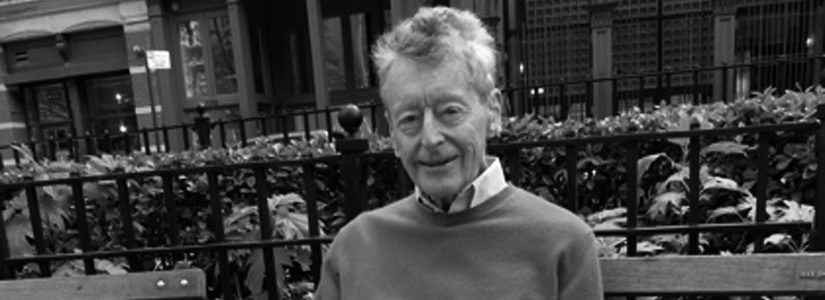
In Memoriam: Oliver Allen
October 10, 2017 | by Hal Bromm, architect, gallery owner, and preservationist
Article from Fall 2017 Newsletter
Learning of the death of Oliver Allen in April 2017 at the age of 94 was sad confirmation that time races by far faster than most of us would like. Oliver was a key player in early efforts to save Tribeca, a role he played with tireless dedication and a spirit of community volunteerism that was truly outstanding. In our work together under the guidance of Tribeca Community Association leader Carole DeSaram, Oliver and his wife Deborah also blessed us with a warm friendship. His death is a reminder that other friends who worked decades ago to save our Tribeca neighborhood are no longer here; in the past year we also lost playwright Edward Albee and artist Jim Rosenquist. Pioneers all, their contributions helped preserve a community created by the adaptive re-use of historic mercantile buildings.
In the early 1970s, when there was almost no hint of residential activity in lower Manhattan’s quiet streets, the old Washington Market food halls sat as ghostlike reminders of days past. By 1984, as the area grew in popularity and the pace of loft conversions accelerated, inappropriate rooftop additions, cornice removals, and other alterations increasingly jeopardized the area’s historic fabric and character. Oliver was a vital force in helping form The Committee for the Washington Market Historic District, the goal of which was to foster recognition of the area’s importance in New York history by preserving the buildings and blocks that formed the old Washington Market. The committee enlisted the support of area residents, including Albee, Rosenquist, and actor Robert De Niro to lobby the New York City Landmarks Preservation Commission (LPC) to designate the area as an historic district.
Oliver Allen worked tirelessly to create a photographic record of the streetscapes and buildings that would document the area as it existed at that moment in time. Oliver understood that saving their historic character required sensitive attention to detail if the area were to retain its distinctive sense of place. His dedication led to his purchase of a special parallax-correcting lens that would eliminate distortion of a building façade, and his exemplary efforts became an invaluable resource for the LPC.
With his professional expertise in the print world, Oliver worked closely with noted architectural historian Andrew Dolkart and graphic designer Connie Baldwin to publish The Texture of Tribeca, an award-winning book that documents the area’s history and architecture. It traces life in Lower Manhattan from the time when “no one of any social consequence lived north of Chambers Street” to the food market’s demolition in the urban renewal of the 1960s.
Oliver was justifiably proud of the result; in response to the committee’s advocacy efforts, the LPC designated the Tribeca West Historic District in 1991, followed in 1993 by Tribeca North, South, and East. These districts have helped to preserve one of America’s most historically important urban mercantile centers, containing an unprecedented collection of 19th century commercial architecture. Oliver and his wife Deborah were dedicated neighbors whose focus, energy, and enthusiasm helped to guide our neighborhood’s renaissance. That Tribeca has become a national model of successful adaptive re-use in an urban center is due in no small way to Oliver’s love of history and his beloved community.




